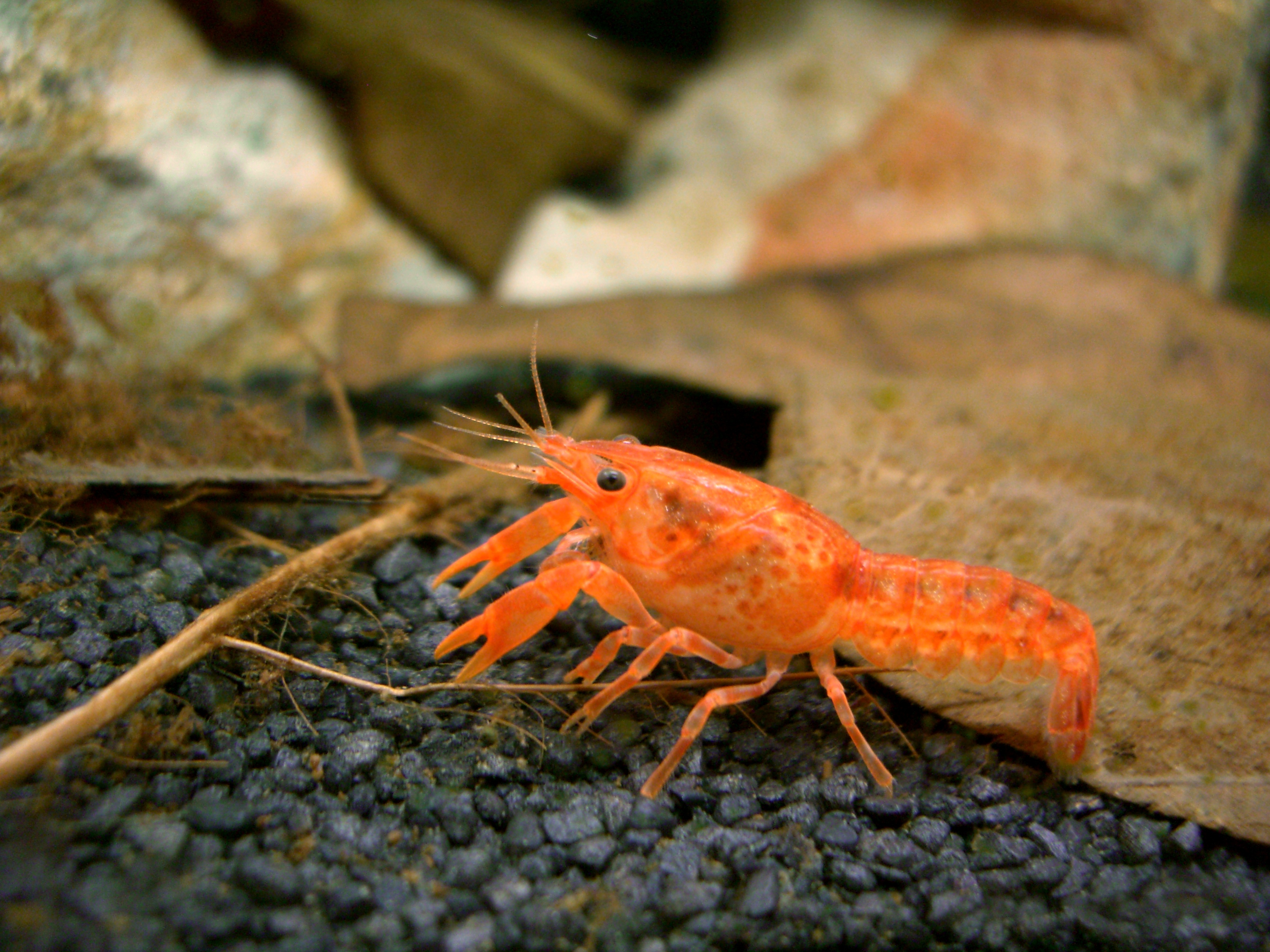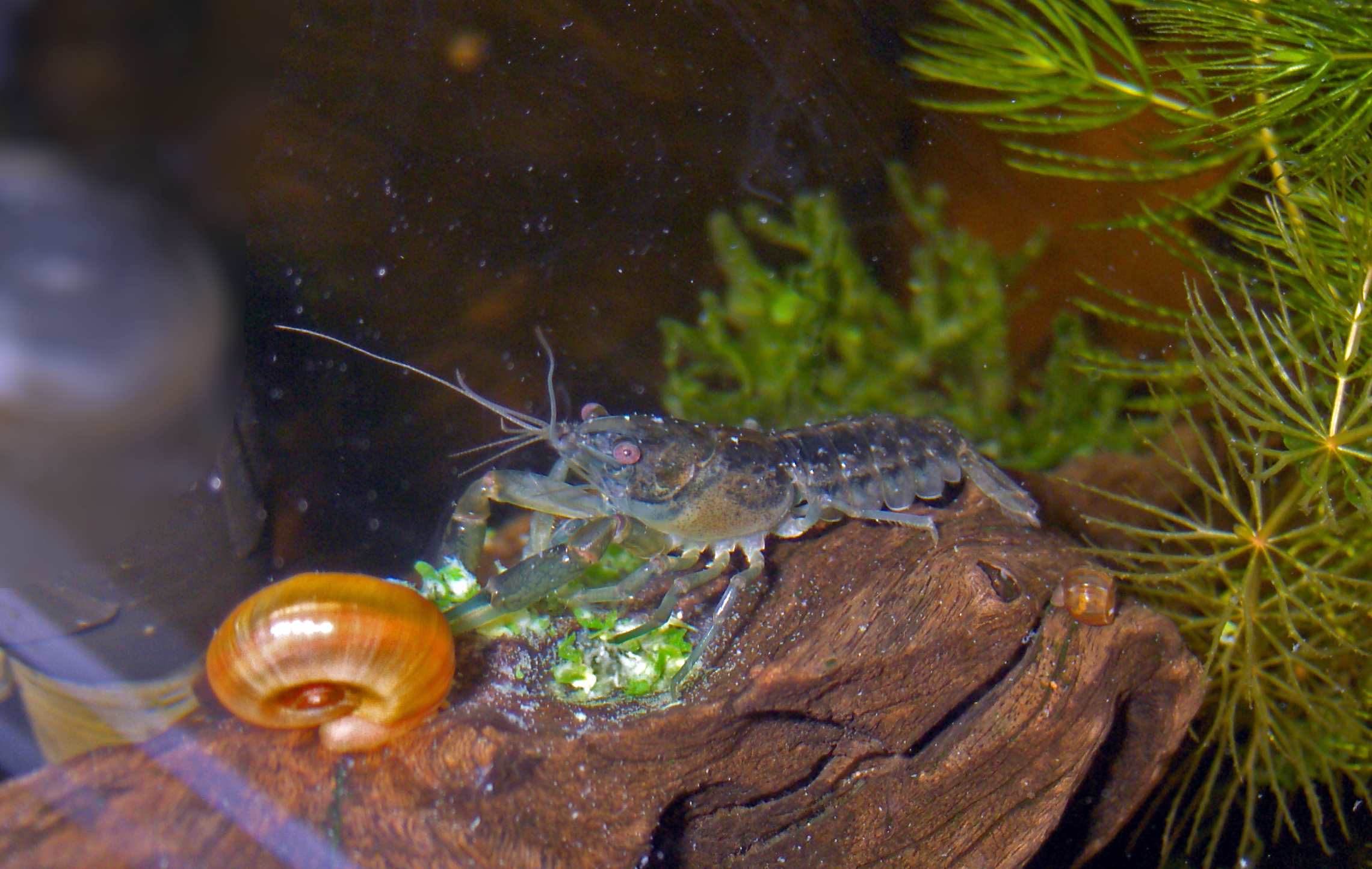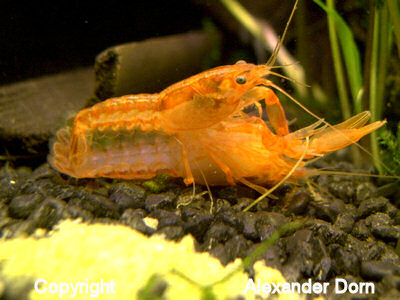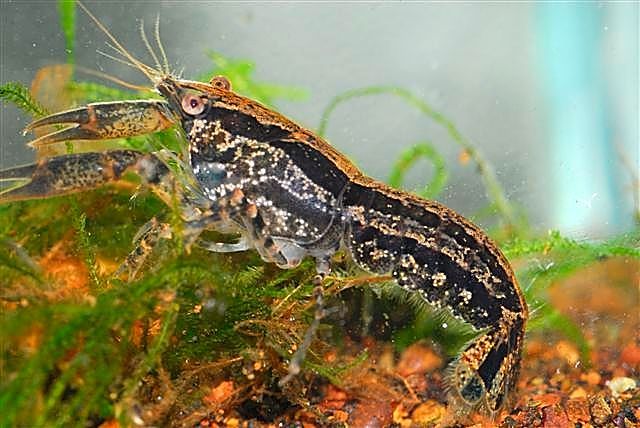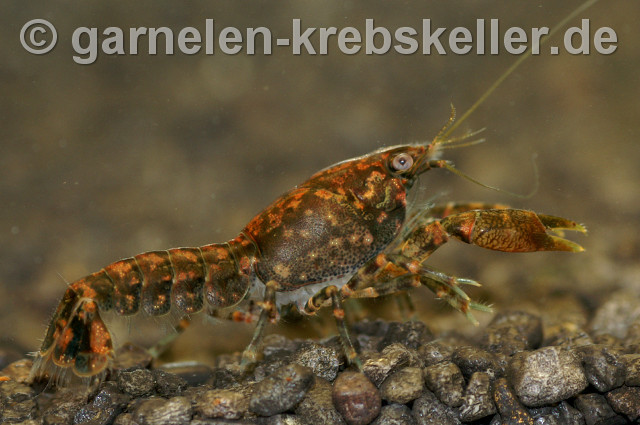Cambarellus
Striped dwarf crayfish ( Cambarellus patzcuarensis ) in an orange color morph
The dwarf crayfish ( Cambarellus ) are a genus in the family Cambaridae. The 17 species live in fresh water of the Mexican plateau and along the North American Gulf Coast.
Features
The dwarf crayfish were often overlooked because of their small size by researchers or could not be caught in the wide-meshed nets or traps. They reach a maximum length of 4 centimeters in females and 3 centimeters in males. They are therefore in size only to the smallest species of the other genera within her family comparable, for instance with Procambarus youngi or Orconectes clypeatus.
The limbs of the first abdominal segment of the male are formed into a Gonopodienpaar. The Gonopodien have extensions which may be used to distinguish between the types. Typical of the genus are also small thorn -like hooks on the base member of the walking legs of males. These serve to hold the female during copulation. In contrast to the other genera of the family Cambaridae such Ischiumhaken are found in the dwarf crayfish on the second and third pair of walking legs. The sperm storage (annulus ventralis ) of the females and matching the sperm groove of males are also characteristic of the genus.
Taxonomy
Genus
The genus Cambarellus was initially built in 1905 by Arnold Edward Ortmann as a subgenus of the genus Cambarus. Ortmann was following a statement by Walter Faxon, who in 1885 divided the genus Cambarus according to the characteristics of the walking legs of males in five groups. In the fifth group of Montezuma dwarf crayfish, which was back in 1857, described by Henri de Saussure as Cambarus Montezumae and today is the type species of the genus Cambarellus, as well as the Louisiana dwarf crayfish were, at that time as Cambarus Shufeldti of Faxon himself described. He noticed that these two species are the only within the genus Cambarus were who did not display on the third or fourth walking legs hook, but on the second and third. Faxon had thus compiled a Mexican style and a United States from the same group. Ortmann was a third to add these two types yet, namely Cambarus chapalanus, which had meanwhile been described by Faxon. Horton H. Hobbs Jr. 1942 raised the subgenus Cambarellus to the genus.
Subgenera
The division into three subgenera was conducted in 1983 by JF Fitzpatrick Jr.. He assumed that the radiation of each species began before the Miocene in the southern Mississippi basin. This would seem to confirm also the fossil record. This results in the geographical distribution of subgenera. In Mexico, only the derived forms of the subgenus nominotypischen Cambarellus are located. Exclusively in the U.S. comes before the subgenus characterized by original features Pandicambarus. The subgenus Dirigicambarus is monotypic, that is, it includes only one species, the Louisiana dwarf crayfish ( Cambarellus shufeldtii ). This species lives sympatric with other species, such as the boy cancer ( Cambarellus puer ). The simultaneous occurrence of different species in the same area could be achieved by re-migration of a species in the late Miocene or early Pliocene, ie at intervals of about 18 million years, have originated.
- Cambarellus alvarezi Villalobos, 1952
- Cambarellus areolatus ( Faxon, 1885)
- Cambarellus chapalanus ( Faxon, 1898)
- Cambarellus chihuahuae Hobbs, 1980
- Cambarellus montezumae ( Saussure, 1857) - Montezuma - dwarf crayfish
- Cambarellus occidentalis ( Faxon, 1898)
- Cambarellus patzcuarensis Villalobos, 1943 - Striped dwarf crayfish
- Cambarellus prolixus Villalobos & Hobbs, 1981
- Cambarellus zempoalensis Villalobos, 1943
- Cambarellus shufeldtii ( Faxon, 1884) Louisiana dwarf crayfish
- Cambarellus blacki Hobbs, 1980
- Cambarellus diminutus Hobbs, 1945
- Cambarellus lesliei Fitzpatrick & Laning, 1976
- Cambarellus ninae Hobbs, 1950
- Cambarellus puer Hobbs, 1945 boys cancer
- Cambarellus schmitti Hobbs, 1942
- Cambarellus texanus Albaugh & Black, 1973

